Hello and welcome!
I was in Rome this past week for the consistory at which the Holy Father created 20 new cardinals, including Cardinal Robert McElroy of San Diego.
It is the custom for the U.S. Ambassador to the Holy See to hold a reception when there is a new American cardinal, which was held Friday night at the embassy. Of course, our host was the new Vatican Ambassador, Joe Donnelly.
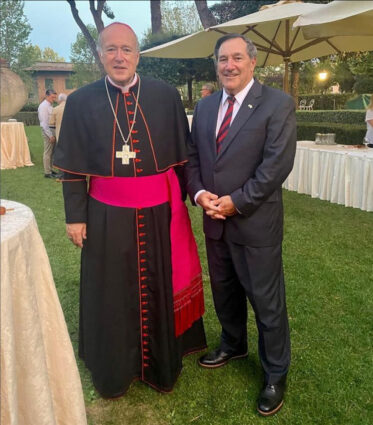
There was a very large crowd, particularly of Americans living in Rome.
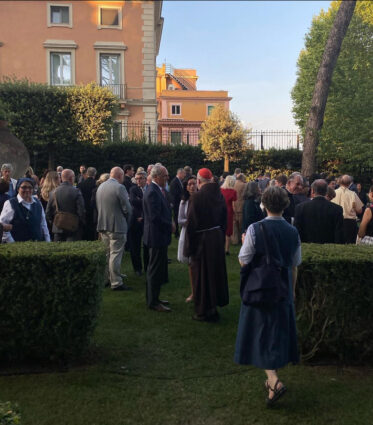
During the evening, Ambassador Donnelly addressed us along with Cardinal Jim Harvey and Cardinal McElroy. The talks they gave were very much about the cooperation of church and state and the contribution that the Church makes to society. The talks were a bit more academic than you would ordinarily hear at that kind of event, but they were very good.
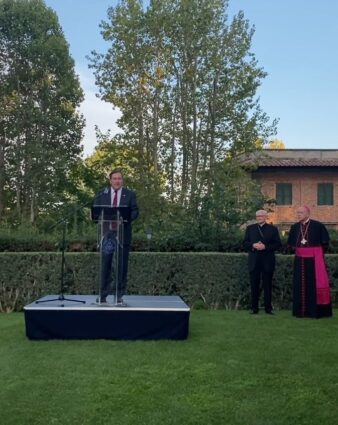
Saturday was the consistory itself, which was held inside St. Peter’s Basilica.
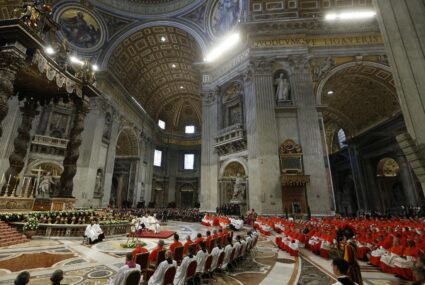
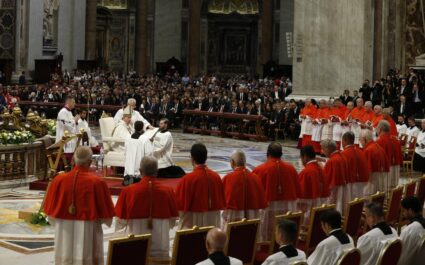
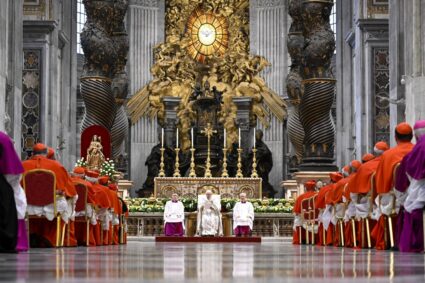
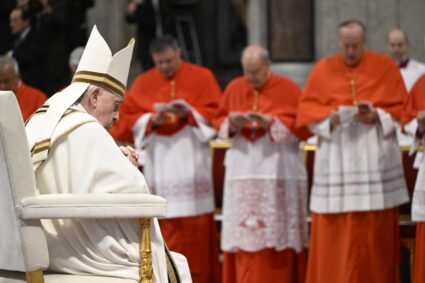
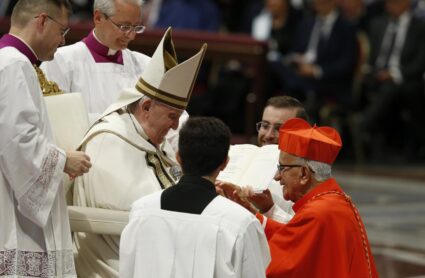
There was quite a large number of cardinals from around the world who attended.
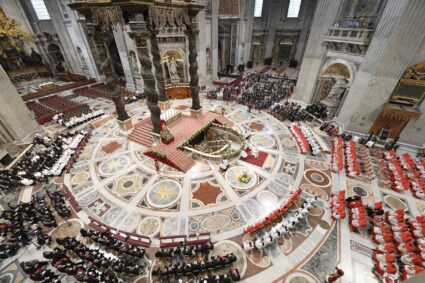
It was a special joy to have Cardinal Adalberto Martinez Flores among the new cardinals. He had been one of my parishioners in Washington, and I ordained him a deacon and then a priest for the Virgin Islands. He was a close collaborator of mine for many years before he returned to his native Paraguay.
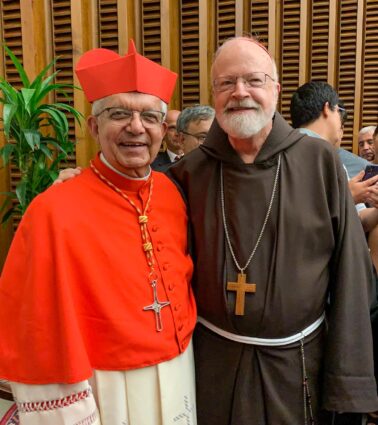
When he immigrated to Washington, he and his brothers were washing dishes at The Army and Navy Club. He heard our radio program from the Centro Católico and offered to be a volunteer. As he became more and more involved, he said he felt as though he had a vocation to the priesthood and was interested in being a priest of the Focolare movement. So, I sent him to the Oblate seminary in Rome to study at the Lateran College.
Since the Focolare movement doesn’t ordain priests, the seminarians have to find a bishop who is willing to ordain them. It was just as he was finishing his theology studies that I was named bishop in the Virgin Islands. So, I called him and said, “Adalberto, I found a bishop who is willing to ordain you.” He asked me who, and I said, “Me!”
So, he came to the Virgin Islands and worked with the Hispanic community on St. Croix for ten years. Then, when his mother got sick, he went back to Paraguay. While he was there, the archbishop was so impressed with him that he made him auxiliary in Asunción. With that, his trajectory changed from being in the West Indies to being in his home country. After being auxiliary bishop in Asunción, he was named the founding bishop of the Diocese of San Lorenzo, then he became bishop of the Diocese of San Pedro. Later, he was sent to the Diocese of Villarrica del Espíritu Santo and was also elected president of the Paraguayan Bishops’ Conference. Most recently, he was made Archbishop of Asunción.
Cardinal Martinez had his Mass of Thanksgiving on Sunday at the Church of the Gesú.
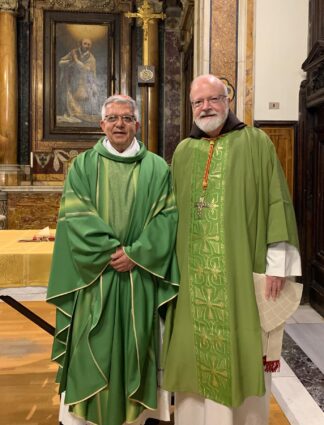
The church has been cleaned and renovated is just breathtaking.
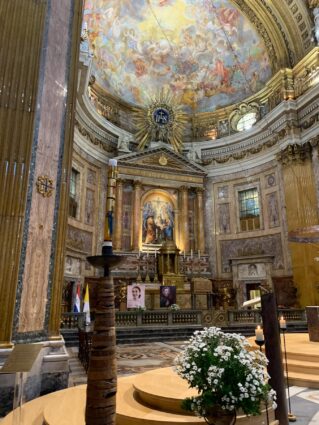
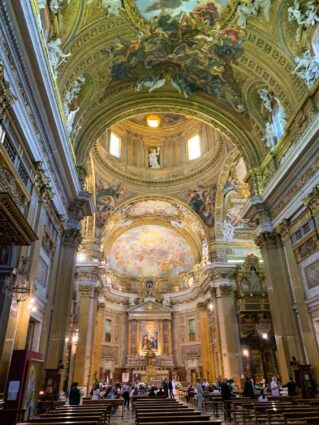
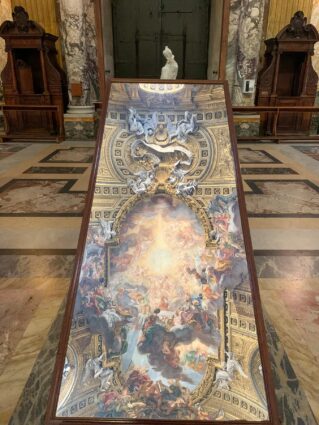
In the back of the church, they have a mirror so you can see the ceiling
It was a very appropriate setting because the Jesuits were significant in the development of Paraguay. The first Paraguayan saint was a Jesuit, St. Roque, and the Jesuit missions, called reductions, are a very important part of the history of the country.
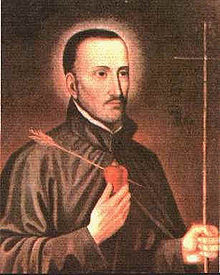
One of the characteristics of these missions was the way that the Jesuits respected the indigenous culture and preserved the language of the people. Paraguay is the only country in the Americas that I know of where the people are truly bilingual in Spanish and the indigenous language. Unlike in other countries, where the native language is spoken only by the indigenous people, in Paraguay, Guaraní is spoken by everyone – whether they be indigenous, mestizo, or of European extraction. That was the result of the way the Jesuits evangelized Paraguay.
At the end of the Mass, I joined the cardinals and bishops at the tomb of St. Ignatius. Over the tomb, there is a painting that is lowered to reveal a magnificent statue of St. Ignatius in Mass vestments.
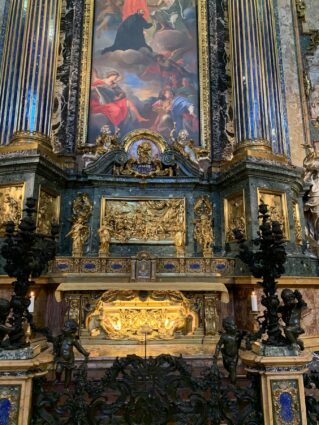
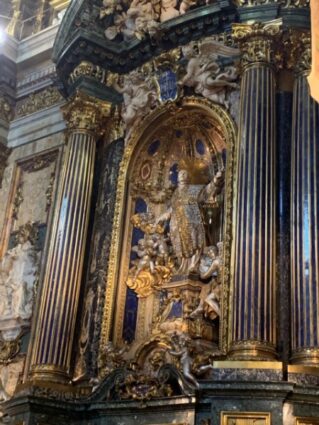
It was a great joy for the Paraguayan people to have their first cardinal. The church was filled with Paraguayans, many who live in Rome and others who traveled to be part of the celebration, including President of Paraguay Mario Abdo Benítez and his wife, Silvana López Moreira.
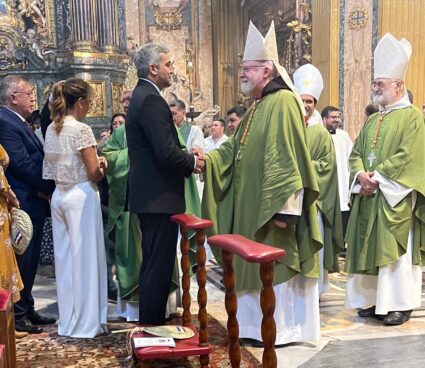
We were also joined by many of our friends who knew Father Alberto from Washington and the Virgin Islands.
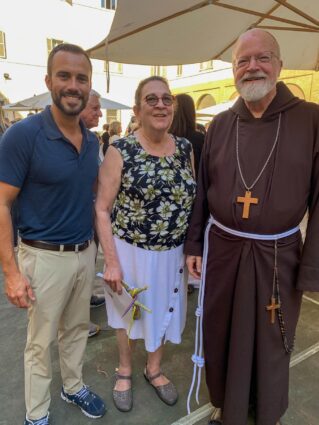
With friends Felice Gorordo and Manella Dies. Manella used to work at the Centro Católico in Washington. Her brother is Xavier Suarez, the former Mayor of Miami, and her nephew is the present mayor
After the Mass, they had a very nice reception in the courtyard of the Gesú with Paraguayan musicians and folk dancers.
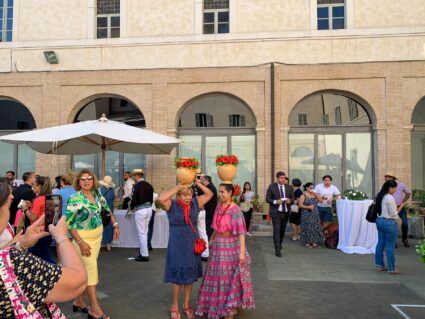
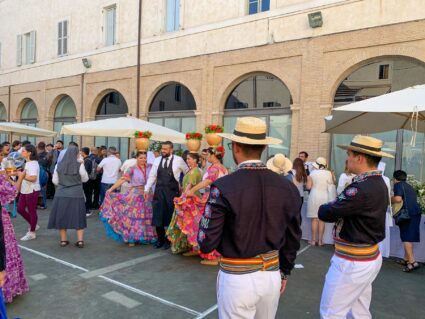
In many of their folk dances, women dance while balancing bottles on their heads, but on this occasion, they were using ceramic jugs.
They asked me to address the people at the end of the celebration. I was very moved by the whole experience, especially seeing someone whom I had taken to the seminary and ordained now become the first cardinal of his country.
On Monday and Tuesday, we had the meetings held by the Holy Father with the College of Cardinals to discuss Praedicate Evangelium. The cardinals broke up into different language groups, after which we had discussions in the Synod Hall.
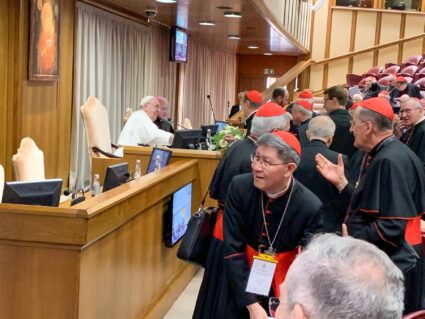
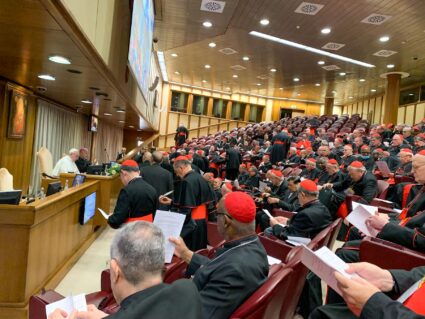
There was a very good spirit among the cardinals, and they were very happy to be together and have the opportunity for conversation, particularly those that took place in the smaller language groups. Of course, with the pandemic, it was difficult to gather the College of Cardinals. During the last consistory, very few cardinals were able to attend, and those who did had to isolate and quarantine. It was a much different experience this time.
During the two-day session, it was also announced that the next Jubilee Year will be entitled “Pilgrims of Hope,” to be observed in 2025.
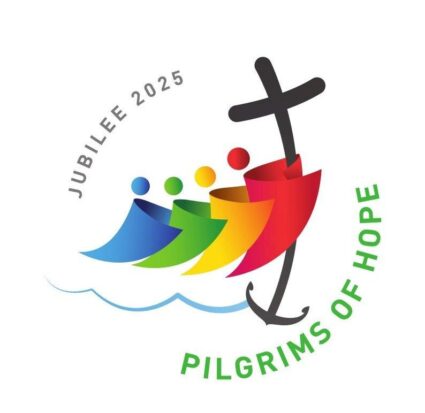
Tuesday afternoon, the cardinals celebrated a final Mass with the Holy Father to close the consistory.
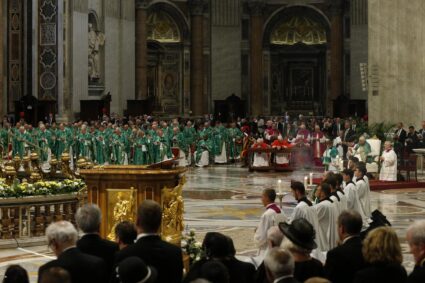
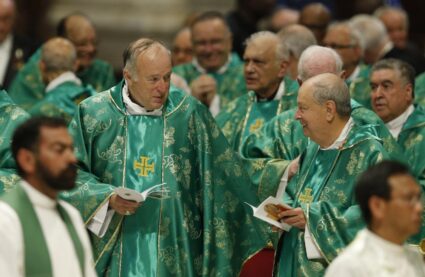
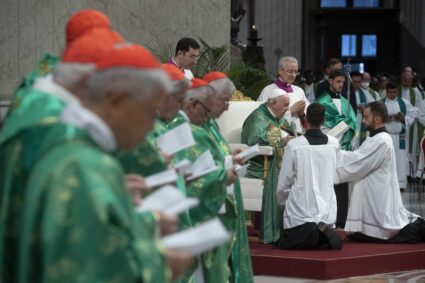
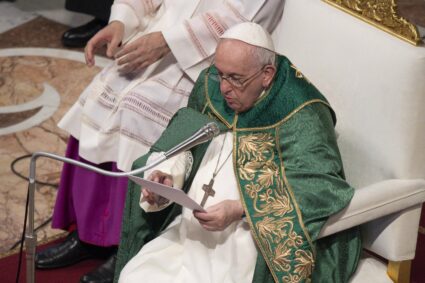
Also, on Tuesday, I met with Cardinals Bassetti and Zuppi, the former and current heads of the Italian Bishops’ Conference, and Bishop Giuseppe Baturi, the secretary of the conference to talk about child protection.
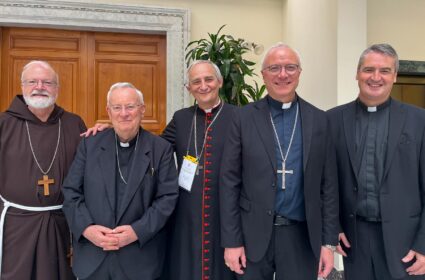
When at the Vatican, I often have occasion to pass by Castel Sant’Angelo, which has always fascinated me.
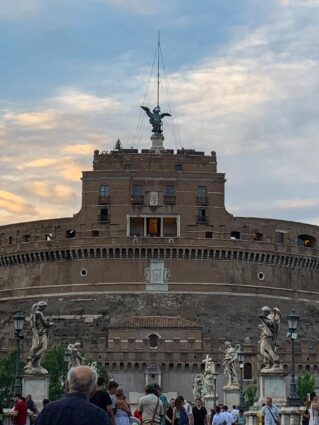
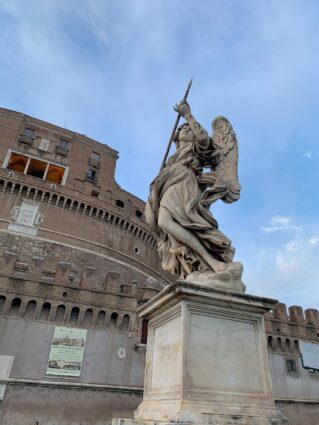
Of course, I was very happy to see that there was a Roman centurion there guarding the statues on the bridge! (And I was particularly happy that he didn’t charge me when I took his photo!)
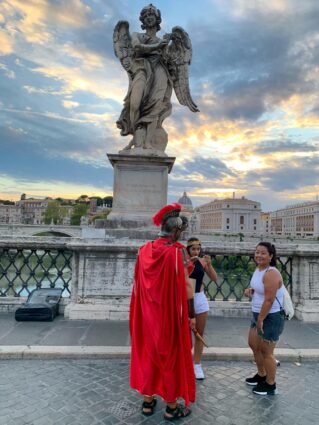
Wednesday, I took part in a press conference to announce a new documentary, Mother Teresa: No Greater Love that has been released by the Knights of Columbus to coincide with the 25th anniversary of her death. There had been a screening of the film the night before at the North American College.
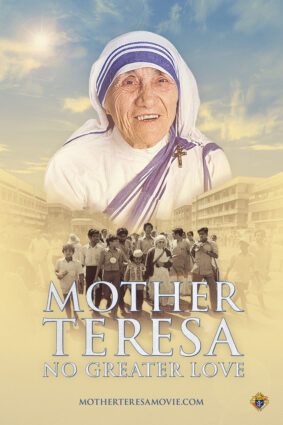
Along with me at the press conference were Supreme Knight Patrick Kelly; regional superior of the Missionaries of Charity, Sister Miryam Therese; and Father Brian Kolodiejchuk, the postulator of Mother Teresa’s cause of canonization.
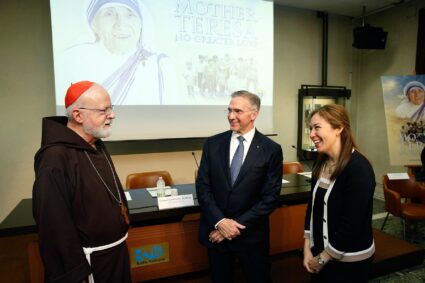
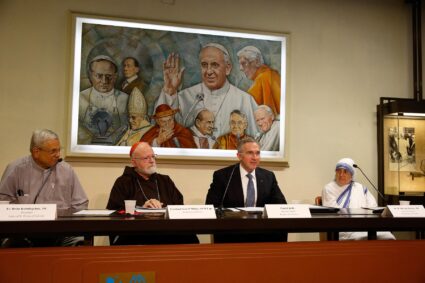
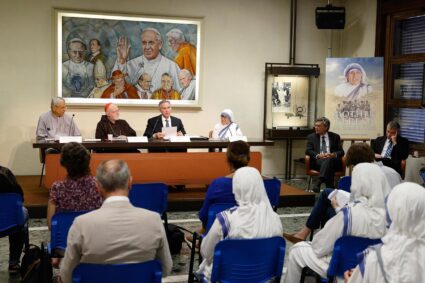
They asked me to speak about my experiences with Mother Teresa. It was interesting because the Supreme Knight said that he was struck to realize that the seminarians at the North American College were too young to have met Mother Teresa or have any real experience of her. I said that I didn’t fall into that category because I met her when I was a seminarian!
I was teaching at The Catholic University of America in the 1960s, and, at that point, Mother Teresa was relatively unknown. One day, we all received a notice in our mailboxes that the university was going to honor a missionary sister at Caldwell Hall and that all the faculty were invited to attend. I actually didn’t want to go, but my Irish guilt kicked in. I thought, “If I don’t go, I know there will be a low turnout, and this poor nun will be embarrassed.” So, I went and was one of only a handful of people there. Up on the stage was Cardinal O’Boyle, Eileen Egan from Catholic Relief Services, and a woman I assumed was Indian because she was wearing a sari. Of course, that woman was Mother Teresa.
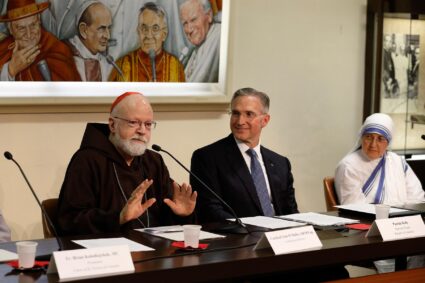
The session was opened by Cardinal O’Boyle, and then Eileen Egan gave a beautiful account of how she came to know Mother Teresa working in the slums of Calcutta. Then, when Mother got up and spoke, there was not a dry eye in the house. I looked around, and I knew that we all realized we were in the presence of holiness.
When the program was over, I boldly went up to the cardinal (who was sort of a curmudgeon, and we were all afraid of him) and said, “Your eminence, this was a terrible blunder!” He said, “What do you mean, brother?” To which I responded, “This should have been held in the shrine, and you should have made all the students and faculty come and listen to this woman!” And he replied, “You are right.”
Of course, we heard nothing more about Mother Teresa until a few years later when she was the subject of Malcolm Muggeridge’s BBC documentary “Something Beautiful for God.”
I also spoke about how she came to the Virgin Islands at my request. At the time, the entire diocesan budget was $30,000 a year. While I was very happy the sisters were coming, I had no idea how I was going to support their ministry. But, as soon as I announced it, all the Hindu businessmen on the island asked to have a meeting with me and told me that they would pay any expense the sisters had. It was very moving because I had no contact with those businessmen, and they had no contact with the Church, but when they heard that Mother Teresa’s sisters were coming, they made this very generous gesture.
Then, when I became Bishop of Fall River in the 1990s at the beginning of the sexual abuse crisis, I wrote to Mother again to ask her if she would send sisters there because I thought their presence would be an important source of healing. Mother sent the sisters immediately, and she even came to visit us in Fall River. It was a great and joyful event.
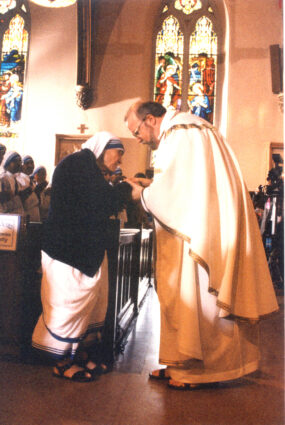
So, I was very happy to be a part of the announcement of this film, and I want to encourage everyone to see it when it comes out. I know it will help many people to understand the breadth of Mother’s ministry and how many have been touched by it.
Until next week,
Cardinal Seán
